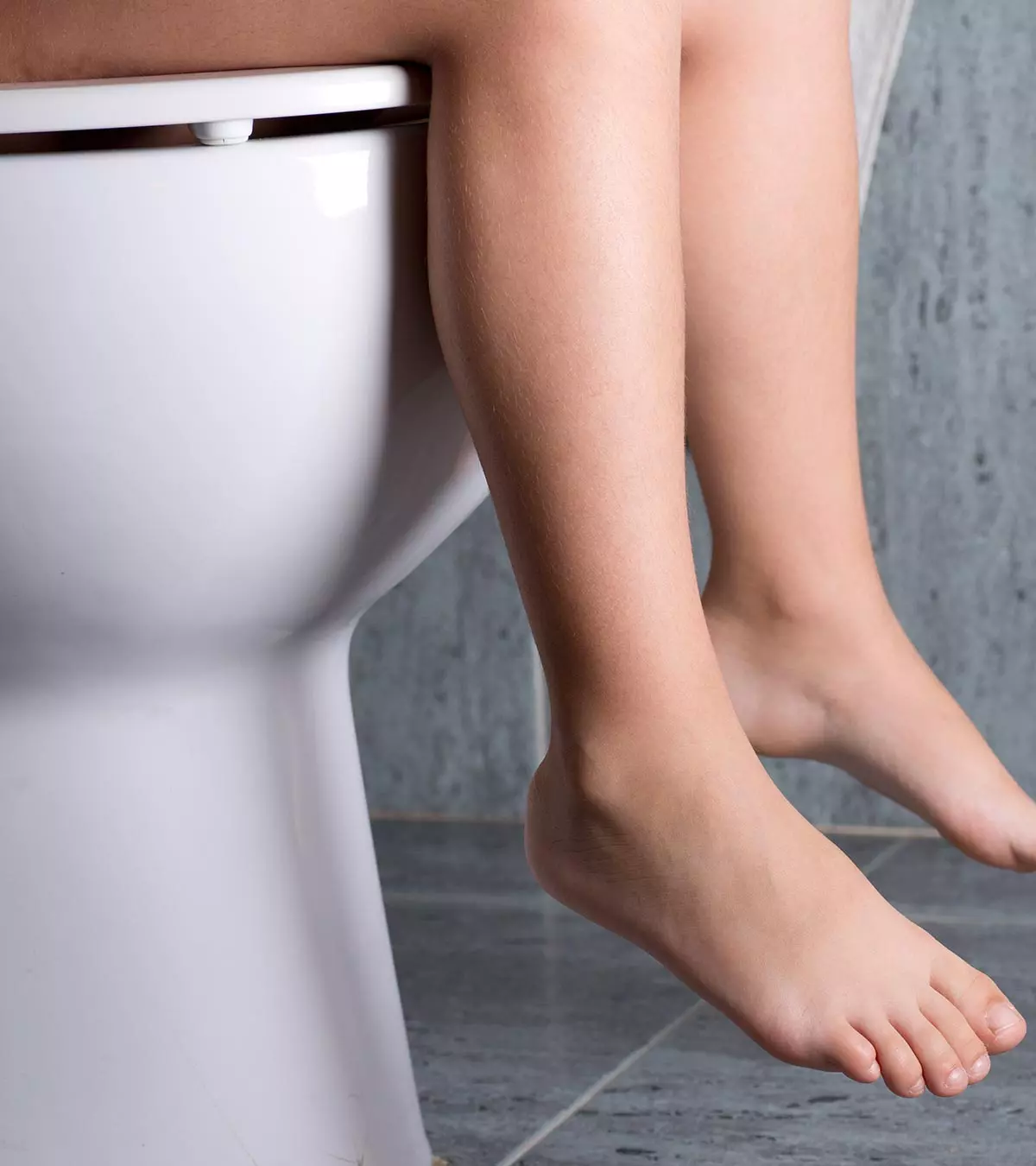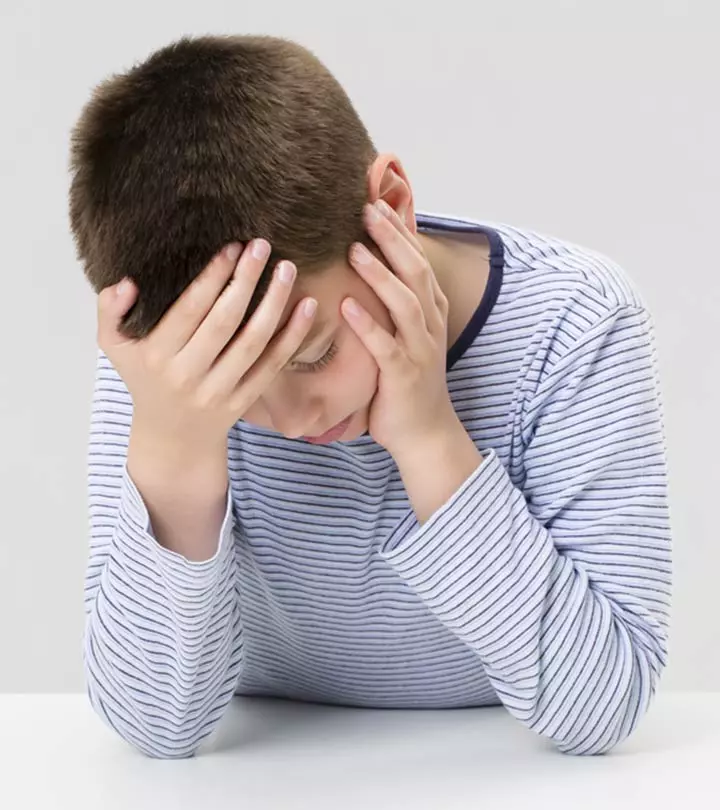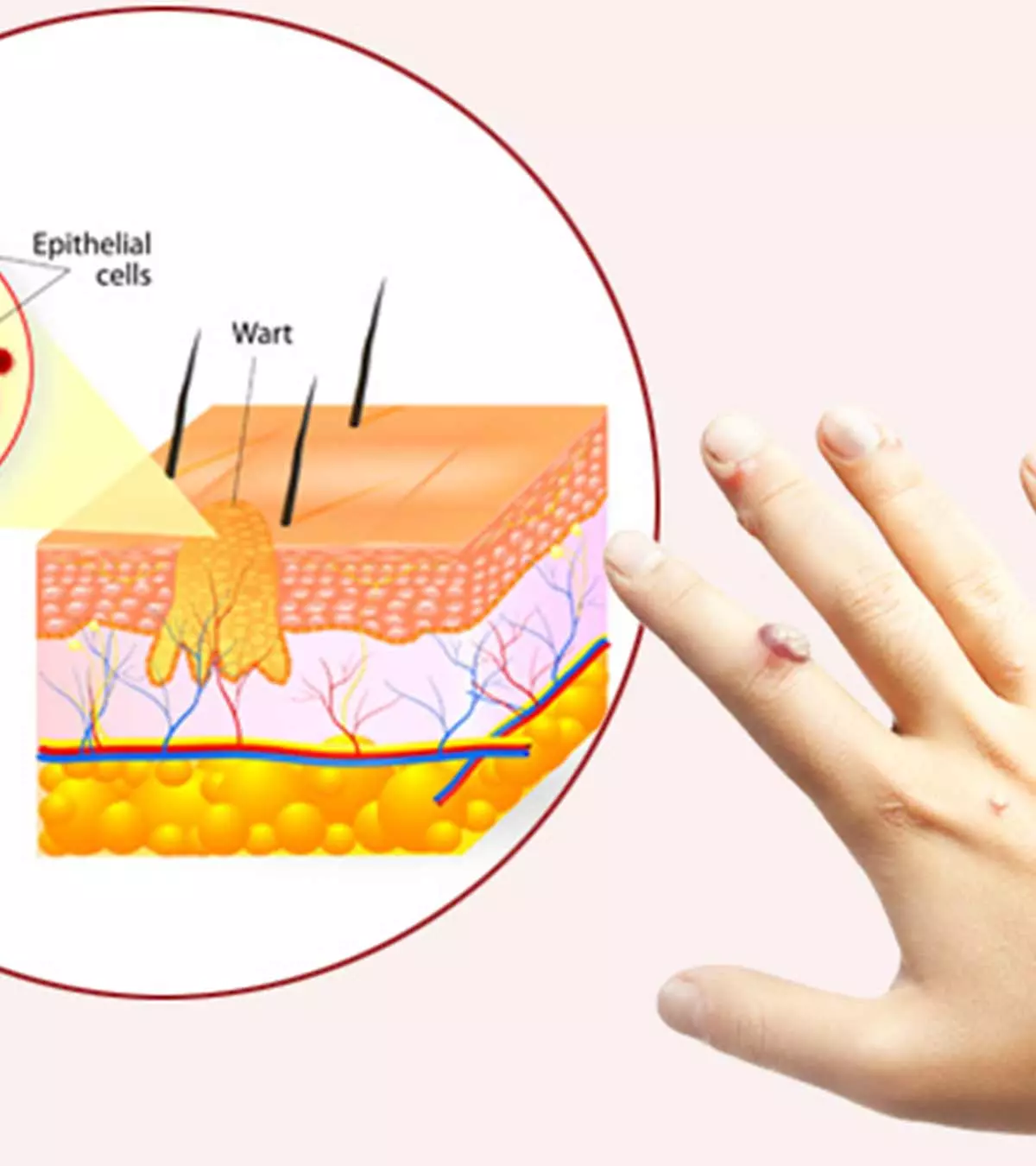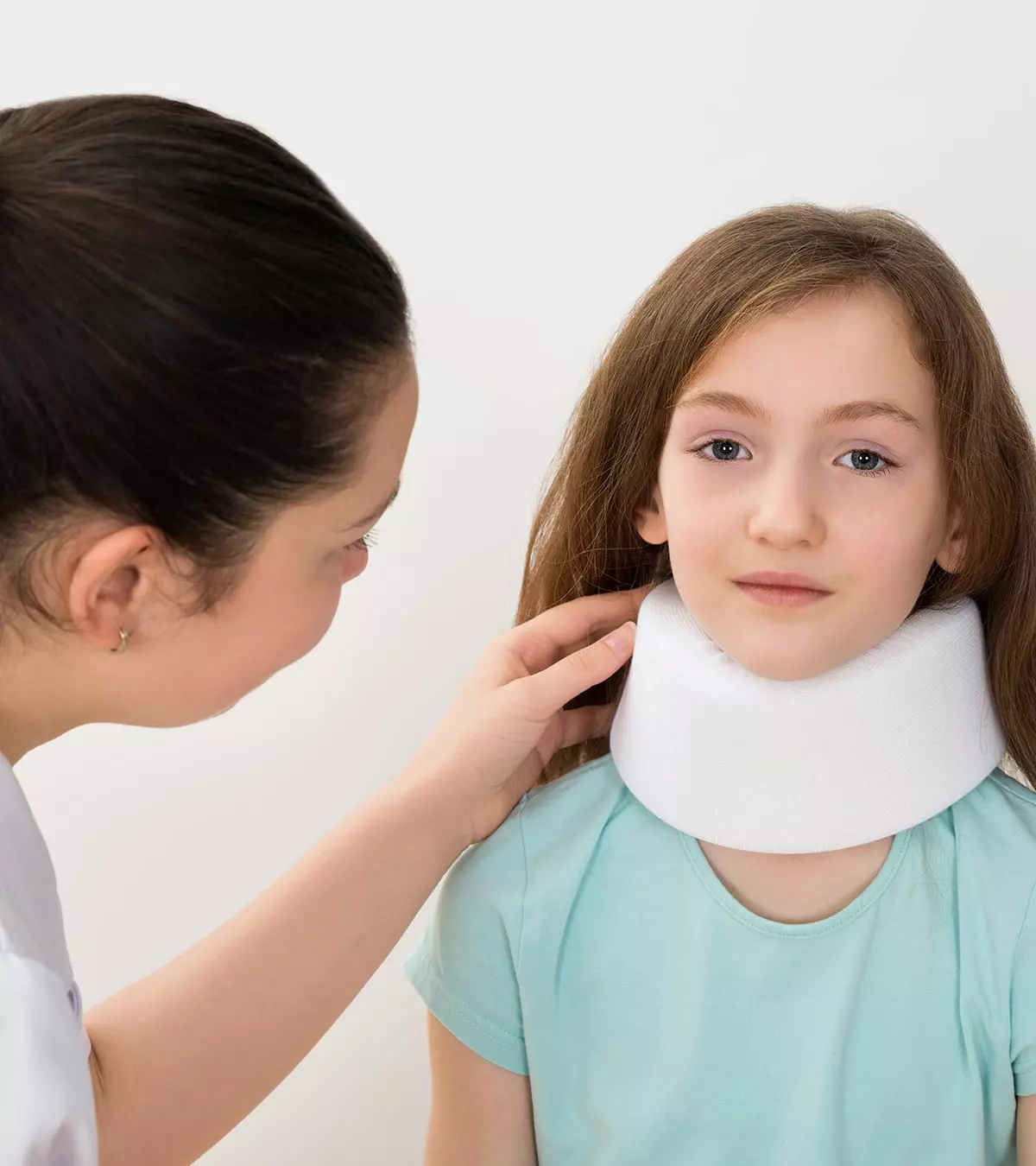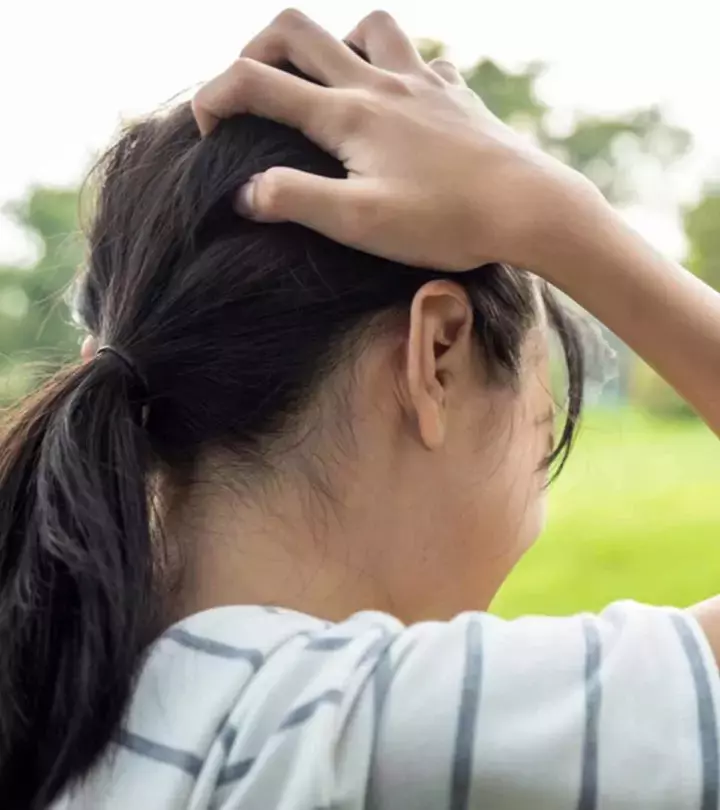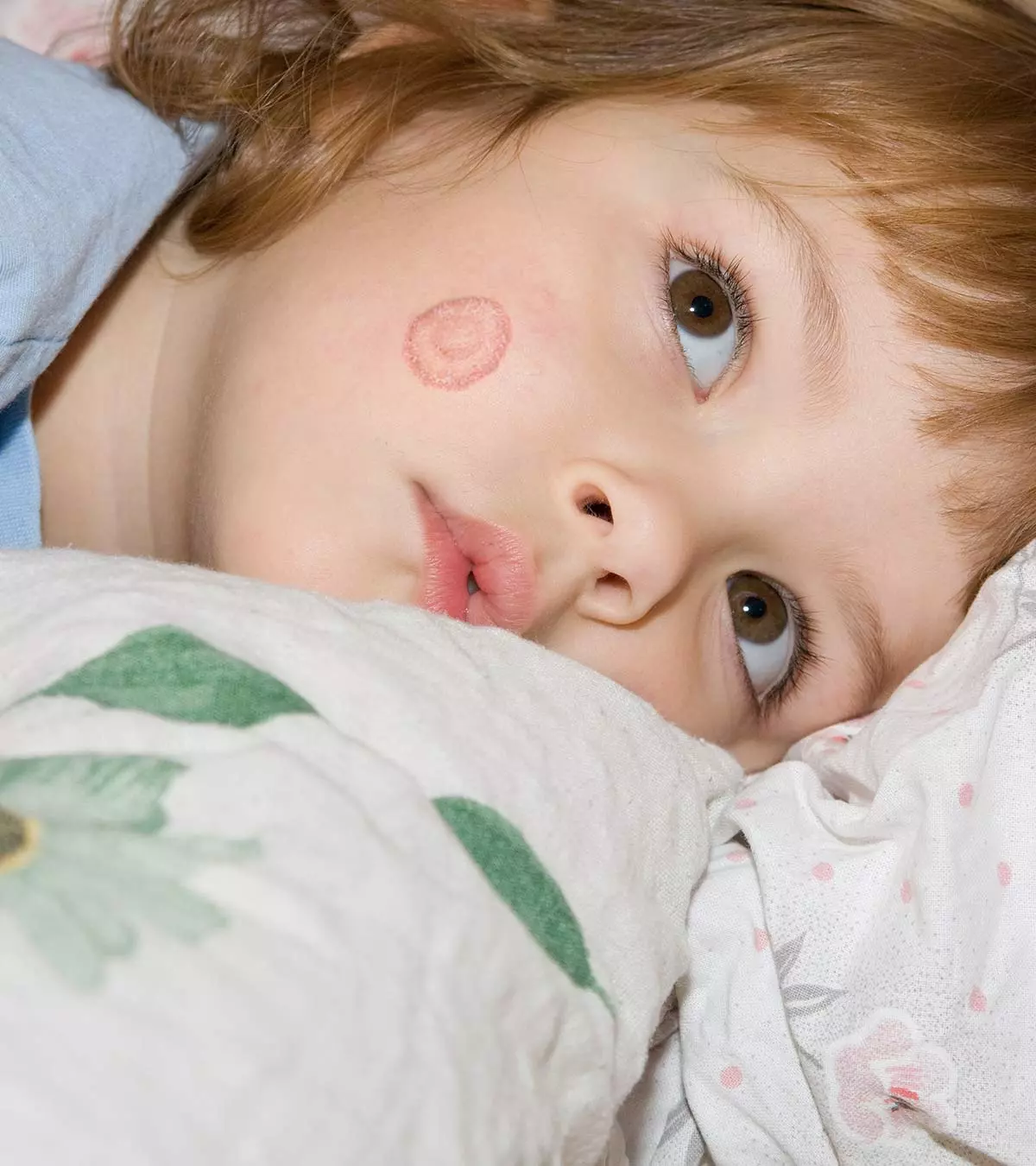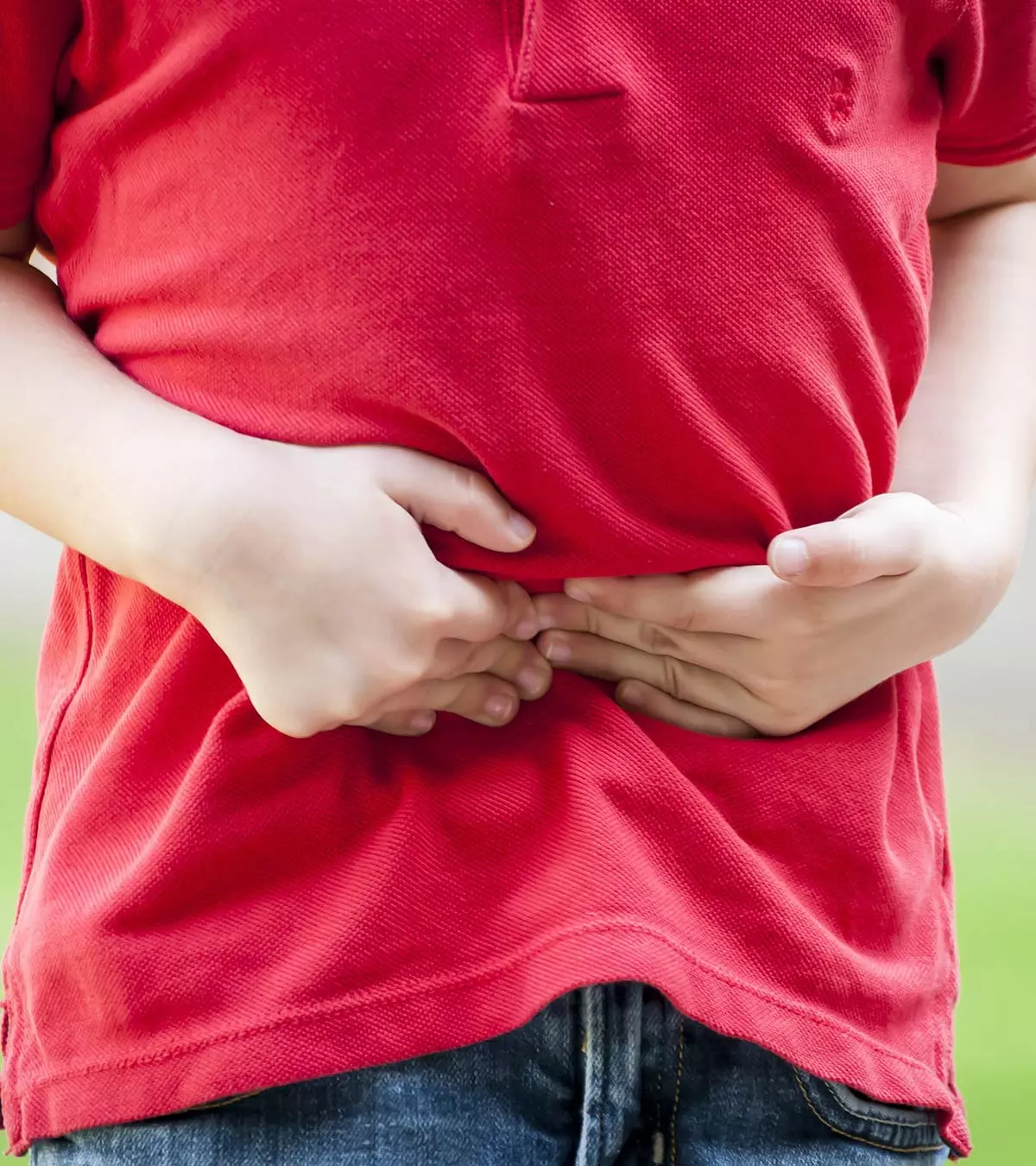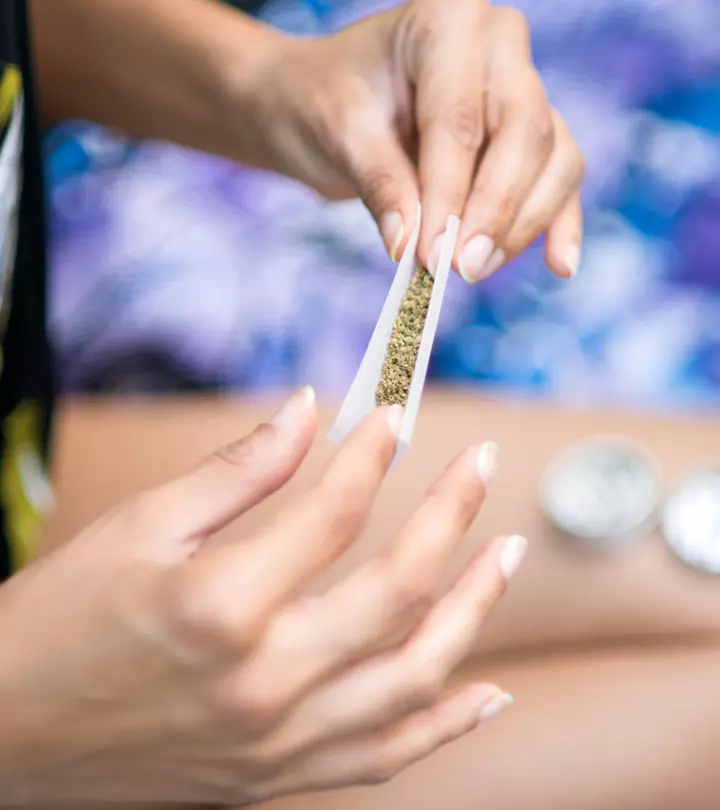
Image: iStock
Marijuana is a mix of dried leaves, stems, and flowers of the Cannabis sativa or Cannabis indica plant. The most potent ingredient in marijuana is delta-9-tetrahydrocannabinol, also known as THC. This chemical has psychotropic effects that can change one’s mood and consciousness (1) (2).

According to the 2018 National Survey on Drug Use and Health conducted by the Substance Abuse and Mental Health Agency, marijuana is the most common illicit drug used in the US. The survey results also suggest that around 33% of 10th graders and 44% of 12th graders have used marijuana in their lifetime (3).
Read this post as we give you some facts about the use of marijuana among teens, its effects on the teenage brain, the signs of teens using it, and ways to prevent marijuana addiction.
Key Pointers
- Marijuana use is prevalent among teenagers, and studies have indicated that it can have detrimental effects on their mental and physical health.
- Some warning signs of marijuana use in teenagers include anxiety, hallucinations, skipping school, and loss of interest in previously enjoyed hobbies.
- Marijuana use can lead to impaired brain functions, increased mental health issues, addiction, and heart and respiratory ailments.
- To prevent marijuana use among teenagers, parents can encourage open conversations with their teens, set rules and boundaries, and teach them strategies for managing their emotions.
Facts About The Use Of Marijuana Among Teenagers
The following are some facts about the use of marijuana by American teenagers.
- Around 3.1 million teens aged between 12 and 17 years used marijuana in 2017 (3).

- A recent study published in The American Journal of Psychiatry has shown that the negative effects of marijuana on teenagers’ cognitive development are worse than that of alcohol (3).
- Research also shows that marijuana may permanently affect the brain when regularly used from adolescence (4).
- The number of preteens and teens who consider smoking marijuana a risky behavior has decreased over the years. In 2007, around 54.6% of preteens and teens between 12 and 17 perceived marijuana smoking as risky, while in 2013, only 39.5% of preteens and teens perceived the behavior as risky (5).
- According to the National Institute of Drug Abuse, there were around 455,000 emergency room visits due to marijuana use in 2011. It is estimated that 13% of these cases involved teenagers between 12 and 17 (5).
- One in six adolescents who start using marijuana before 18 years gets addicted to it (6).
- In the past few decades, the concentration of THC in marijuana has become three times higher. This indicates that it can have major brain-altering effects even when taken in small doses (6).
The use of marijuana, either by smoking or vaping, in the form of marijuana oil, wax, or herb, can expose youth to several acute health effects. As per the National Survey on Drug Use and Health data, 18.7% percent of those aged 12 or older reported the use of marijuana in the past year. As the below graph depicts, amongst children aged 12 or older, marijuana use was higher amongst American Indian or Alaska Native and Multiracial people than among Black, White, Hispanic, and Asian people.

Marijuana use among US people aged 12 and above, by race (2025)
Source: Key Substance Use and Mental Health Indicators in the United States: Results from the 2025 National Survey on Drug Use and Health; Substance Abuse and Mental Health Services Administration (SAMHSA)Note: NH = Not Hispanic or Latino; AIAN = American Indian or Alaska Native; NHOPI = Native Hawaiian or Other Pacific Islander
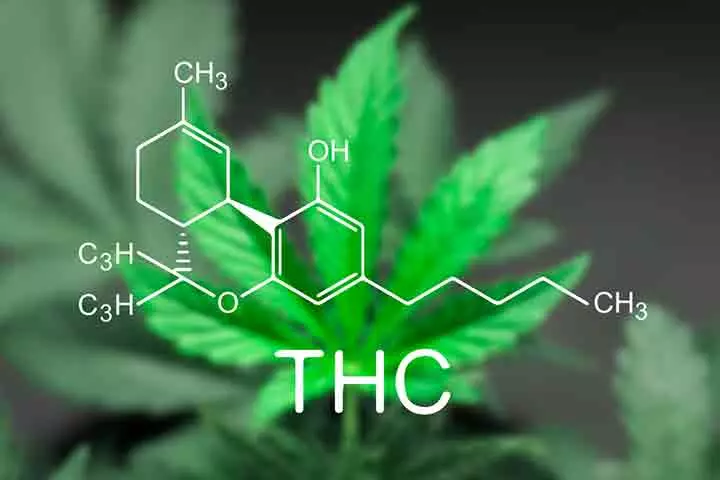
Prevention Of Marijuana Use In Teens
No amount of marijuana is considered safe, so parents should help teenagers avoid using marijuana. Here are some ways in which you may help them (7).
- Encourage teenagers to discuss their opinion or experience related to marijuana. You may also express your concerns regarding its use. An open discussion may help teens understand your views regarding marijuana and vice versa.
 Point to consider
Point to consider- Set clear family rules about not using drugs. Ensure your children are not influenced by their peers, and let them know about the risk factors of using marijuana.

- Connect with the parents of your children’s friends. Maintaining a good network will allow you to better support your children’s activities.
- Prepare teens to handle peer pressure with confidence, and teach them strategies to handle difficult situations.
- Gain the trust of your children so they may approach you whenever they feel troubled or under pressure.
- Problems in adolescence may be emotionally challenging, so teach your children healthy strategies to handle their emotions. Taking drugs may seem like an easy way out, but let them be informed that it has major health risks, some immediate and others in the future and longer term.
- Be a role model and handle emotions such as anger, sadness, frustration, and resentment with a cool head.
- Teach teens relaxation techniques, and help them develop hobbies that bring joy. Encourage them to indulge in family activities, walk in nature, try journaling, and do other beneficial activities.
- Model healthy habits such as abstaining from drugs, tobacco, or alcohol, as parental influence greatly affects how a teenager responds and behaves.
Klara Jane Holloway, a grandmother, shares her worries regarding her grandson’s habit of smoking marijuana, “My 14-year-old grandson is smoking weed. He’s a freshman in high school. He’s on the High Honor Roll. He has college plans for the future. He knows what he wants to do in life… The poor kid is surrounded by addicted people and probably thinks smoking weed is a minor illegal activity… My worst thought is with all the addictive people in his family; he is prone to becoming an addict… I told him that the teen brain is actively developing and continues to develop until around age 25. Marijuana use during adolescence and young adulthood may harm the developing brain (i).”
- Seek professional help and support if you are struggling with adverse teen behavior.
Signs Of Marijuana Use In Teens
The different ways marijuana can be used make it difficult for parents to identify the signs of marijuana usage in their teenagers. However, you could look out for the following signs (5) (7).
1. Physical and psychological signs

The physical and psychological signs vary in severity. They are often temporary and last only up to a few hours after using the drug.
- Red eyes
- Increase in blood pressure
- Headaches and dizziness
- Forgetfulness
- Nausea and vomiting
- Anxiety
- Giggly and talkative
- Hallucinations
2. Behavioral signs
- Taking unexpected risks while driving
- Indulging in unprotected sexual behavior
- Mixing marijuana with other substances such as alcohol, opioids, or other drugs
- Not quitting the addiction despite problems in life
- Stocking up on marijuana supply
- Avoiding social interactions that do not involve marijuana use
- Losing interest in hobbies
- Skipping classes or schools
- Smelling of marijuana
- Having a change in personality and appearance
Some common places where marijuana users tend to hide their stock include
- Water bottles specially designed to hide drugs
- CD/DVD cases
- Packages of over-the-counter drugs
- Electrical outlets
- Towels
- Mattresses
- Under their undergarments
Effects Of Marijuana Use On Teenagers
When a person smokes marijuana, the THC goes to the bloodstream through the lungs and then reaches the brain and other organs
(8). Marijuana may be detected in a drug test several weeks after intake (8). The following are some of the effects of marijuana use.
Short-term effects
When marijuana smoke is inhaled, the (1)
- Heart rate increases
- Bronchial passages in the lungs dilate
- Blood vessels in the eyes expand
These physical changes give rise to (1) (9)
- Altered senses (perceiving brighter colors)
- Mood changes

- Slow reaction
- Difficulty in balance and coordination
- Increased appetite
- Difficulty with thinking and problem solving
- Difficulty with memory
- Hallucinations (seeing things that are not present) and delusions (believing things that are not true)
- Increase in aggression
- Suicidal thoughts
- Worsening of mental health
Long-term effects
- Increased heart rate: The normal heart rate is 70 to 80 beats per minute; however, it doubles with marijuana use, especially if mixed with other drugs. The elevated heart rate increases one’s risk of heart attack (1).
- Respiratory problems: Smoking marijuana regularly may irritate the lungs and cause a chronic cough. Although there is no concrete evidence of marijuana-related lung cancer, studies show that teens who smoke cigarettes along with marijuana are at a higher risk of developing lung cancer (1).
- Mental disorders: Marijuana use may lead to depression, anxiety, and suicidal tendencies. Research also suggests that using marijuana during adolescence may increase one’s risk of developing psychosis or schizophrenia (1).
- Impaired brain function: Research shows that the brain develops during the teenage and young adult years. Frequent marijuana usage may affect teenage brain development, leading to impaired memory, problems with paying attention, and decreased learning and planning. Even if marijuana use is discontinued, difficulty in cognitive functioning may persist (7).
- Addiction: Regular use of marijuana during the teenage years may lead to a risk of addiction. In addition, some teenagers may face marijuana withdrawal symptoms, such as anxiety, panic attacks, restlessness, irritation, headache, loss of sleep, decreased appetite, and stomach pain, when they try to quit the habit (7). Some adolescents who start the recreational use of marijuana before 18 years may develop marijuana use disorder, making it impossible for them to quit the habit even when it causes problems (8).
- School failure: Using marijuana regularly may adversely affect school performance. Teenagers may miss classes, drop out of school, or perform inadequately (7). Those charged with marijuana laws may also end up having a criminal record (8).
Other effects
Some other effects of using marijuana regularly include (8)
- Decreased immunity
- Lower intelligence
- Decreased athletic performance
- Relationship problems
- Reduced life satisfaction
- Misuse of other substances, such as opioids (10).
Frequently Asked Questions
1. How does marijuana use in teens affect their social relationships?
Adolescents who frequently use marijuana may experience detrimental effects on their social connections. Research suggests that marijuana use is correlated with diminished academic achievement, reduced satisfaction with life, and decreased earnings. There is greater reliance on welfare with increased joblessness and criminal activity (11). These effects may ultimately lead to poor social relationships and isolation in the long run.
2. What programs are available to help teens with marijuana addiction?
Government and nonprofit organizations offer various programs to help teens with marijuana addiction. These programs often focus on treatment and therapy, including cognitive-behavioral therapy, motivational enhancement therapy, and contingency management (12).
3. How can parents talk to their teenagers about the risks of driving under the influence of marijuana?
When addressing this topic, parents should be upfront and refrain from sugarcoating the severity of the consequence the teens may face. While talking to your teen about the risks of driving under the influence of marijuana, stick to the proven facts and share with them the side effects of marijuana use. Explain to them how marijuana use can impair important skills required for safe driving, such as affecting coordination, distorting perception, compromising your decision-making ability, and slowing your reaction time (13).
The use of marijuana can cause serious health issues in teens. If you become aware that your teens are using marijuana, act promptly. Talk to a healthcare provider, and get them help. Marijuana may soon become an addiction, so counseling and treatment can make a great difference in safeguarding your teenager’s future.
Infographic: How To Prevent Marijuana Use In Teens?
Teenage brings impulsiveness and the curiosity to experiment in children. This may lead them to fall into the trap of addictions such as marijuana use. The infographic below summarizes what parents may do to prevent marijuana use in teens.
Some thing wrong with infographic shortcode. please verify shortcode syntaxIllustration: Marijuana And Teens: Facts Signs Effects And Prevention
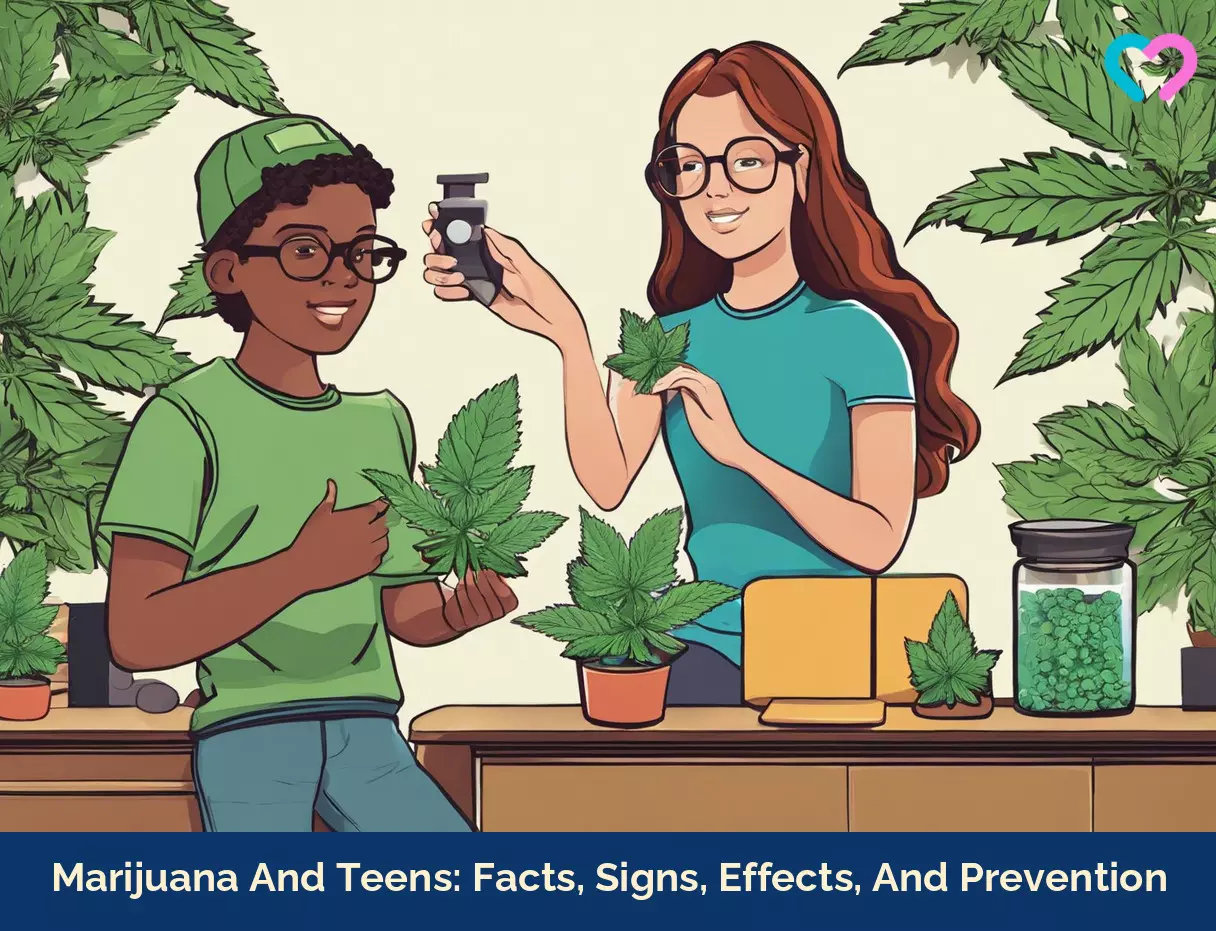
Image: Stable Diffusion/MomJunction Design Team
Learn about the potential effects of marijuana on adolescents in this informative video. Discover how marijuana can impact physical and mental health.
Personal Experience: Source
MomJunction articles include first-hand experiences to provide you with better insights through real-life narratives. Here are the sources of personal accounts referenced in this article.
i. Explaining to my 14 year old grandson why smoking weed is a bad idea.https://medium.com/black-bear-recovery/explaining-to-my-14-year-old-grandson-why-smoking-weed-is-a-bad-idea-adc713d74015
References
- Marijuana.
https://nida.nih.gov/research-topics/cannabis-marijuana - Marijuana.
https://medlineplus.gov/marijuana.html - The Effects of Marijuana on the Teenage Brain.
https://americanaddictioncenters.org/marijuana-rehab/effects-of-marijuana-on-teenage-brain - Cannabis and Teens.
https://www.cdc.gov/cannabis/health-effects/cannabis-and-teens.html?CDC_AAref_Val=https://www.cdc.gov/marijuana/health-effects/teens.html - What to Do When Your Child is Using Marijuana.
https://americanaddictioncenters.org/marijuana-rehab/child-using - Know the Risks of Marijuana.
https://www.samhsa.gov/substance-use/learn/marijuana/risks - Marijuana and Teens.
https://www.mottchildren.org/posts/your-child/marijuana-and-teens - Marijuana.
https://kidshealth.org/en/teens/marijuana.html - Marijuana and Teens.
https://www.aacap.org/AACAP/Families_and_Youth/Facts_for_Families/FFF-Guide/Marijuana-and-Teens-106.aspx - U.S. Surgeon General’s Advisory: Marijuana Use and the Developing Brain.
https://www.hhs.gov/surgeongeneral/reports-and-publications/addiction-and-substance-misuse/advisory-on-marijuana-use-and-developing-brain/index.html - Marijuana.
https://nida.nih.gov/sites/default/files/1380-marijuana.pdf - Cannabis/Marijuana Use Disorder.
https://www.yalemedicine.org/conditions/marijuana-use-disorder - Cannabis and Driving.
https://www.cdc.gov/cannabis/health-effects/driving.html - Jason Patel and Raman Marwaha; (2025); Cannabis Use Disorder
https://www.ncbi.nlm.nih.gov/books/NBK538131/
Community Experiences
Join the conversation and become a part of our nurturing community! Share your stories, experiences, and insights to connect with fellow parents.
Read full bio of Angela Karanja
Read full bio of Pragya Bhargavi
Read full bio of Dr. Ritika Shah
Read full bio of Dr. Joyani Das

 Quick fact
Quick fact





